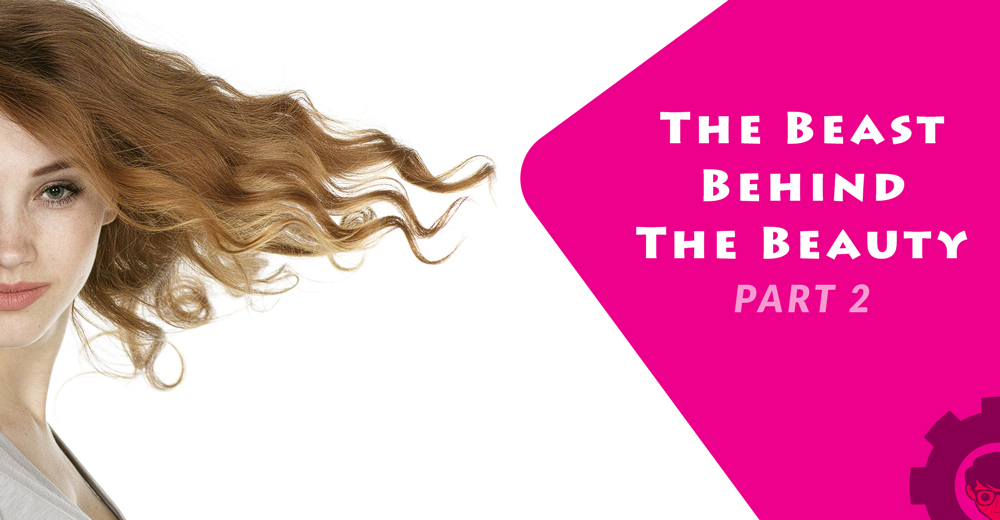
“Beauty and the Beast” is one of the famous fairy tales that most of us have heard in our childhood at least once. If you could have such a beauty that “Beauty” could have? It’s very usual that most of us love to get such beauty as much as we can. Aren’t we?
Let us start from where I stop in my previous article.
6. p-phenylenediammine
 A type of a coal tar dye sometimes listed as CL followed by a five digit number. It is one of the respiratory toxicants and can be contaminated with heavy metals toxic to the brain. Figure Image source: https://commons.wikimedia.org
A type of a coal tar dye sometimes listed as CL followed by a five digit number. It is one of the respiratory toxicants and can be contaminated with heavy metals toxic to the brain. Figure Image source: https://commons.wikimedia.org
7. Carbon black
An ingredient found in eyeliners link to cancer and organ toxicity. It is called sometimes as channel black, pigment black 6, pigment black 7, acetylene black, froflow, arogen, arotone, arovel etc.
8. Siloxanes

Used in cosmetics to soften, smooth and moisten. They disrupt the endocrine system as well. Look for ingredients that end in –siloxane or –methicone and avoid these products.
Figure Image source:https://en.wikipedia.org
9. Sodium Lauryl Sulfate (SLS) and Sodium Laureth Sulfate (SLES)
In products such as shampoo, cleansers, bubble bath SLES can be contaminated with 1 4-dioxane which may cause cancer. SLS may damage liver, irritates skin, eyes and respiratory tract. It is harmful to fish and other wild living beings too. Figure Image source: http://chemicaloftheday.squarespace.com
10. Talc
Tlac is a mineral, produced by the mining of talc rocks and then processed by crushing, drying and milling. Commonly found in baby powders and face powders. Talc is a known carcinogen and is a major cause of ovarian cancer. It can be harmful if inhaled as it can lodge in the lungs causing respiratory disorders. Since the early 1980s, records have shown several thousand infants each year have died or become seriously ill following accidental inhalation of baby powder. Figure Image source: http://butane.chem.uiuc.edu
11. Hydroquinone
The most common type of bleach can result in undesirable effects and significant skin damage like redness, peeling, rashes, dryness and burning when you apply the cream. It causes the skin disease called ochrnosis that features black and blue lesions which can become permanent. In an animal, studies have found enough exposure leads to tumor development.
12. Aluminum
A common ingredient in deodorant and other antiperspirants which may able to flow back into blood stream. It is often linked to Alzheimer’s and brain disorders as well as breast cancers.
13. Heavy metals: Lead, Mercury, Cadmium, Arsenic, Nickel and more
13.1 Lead
We know that lead is bad for us. That’s why it is already prohibited in painting industry too. Lead is proven neurotoxin linked to miscarriage, reduced fertility and delays in the onset of puberty of females. But unfortunately, it is shown up in our foundations, lipsticks and even whitening toothpaste. It is inevitable that some lipstick ends up at your belly. So for those who wear it regularly, this could harm your health in the long run as also.About eight years ago, a campaign for Safe Cosmetics found lead in over half of the brands of lipsticks they tested and recently they have found that it is showing up to 7.19ppm of lead. Sometimes it is found in harmful amounts in red lipsticks.
How does this lead make into cosmetics? It isn’t added as an ingredient but rather makes its way in through contamination. Colour additives are some of the most common sources.
The best way to avoid lead is to buy makeup from companies that make products in small batches and avoid contamination or buy products that are coloured with fruit and other natural pigments.
13.2 Mercury
According to EWG’s Skin Deep database, it is a possible impurity in 1.9% of products including lip-gloss, lip liner, brow liner, moisturizers, lipstick and eye shadow. It is also found in skin lightning, anti-aging and anti-wrinkling products.
Mercury is a neurotoxin also readily absorbable through the skin causing symptoms such as irritability, tremor, changes in vision or hearing, memory problems, depression and numbness.
13.3 Cadmium
Sometimes found in hair and body creams classified as known human carcinogens by the United States Department of Health and Human Services.
13.4 Arsenic
Found at a maximum of 2.3ppm in a study on its presence in 88 different colours of eye shadow and also has been found in skin bleaching creams.
13.5 Nickel
Ten years ago, the first case of nickel allergy caused by eye shadow was reported and it has been reported that even 1ppm may trigger a pre-existing allergy.
Data source: http://www.collective-evolution.com
Following are some of the side effects of using unsafe cosmetics.
It’s not to make you frightened on cosmetics. I wanted to create awareness to make the right choice in purchasing the best cosmetic for you with no harm to your health. With the benefits of cosmetics, it comes in a parcel of harmful and irreversible health effects which you are at risk of. If all the makeup industries are not going to make transparency a priority, we have the right to take it upon ourselves to do our own research, so we can make healthy choices.








